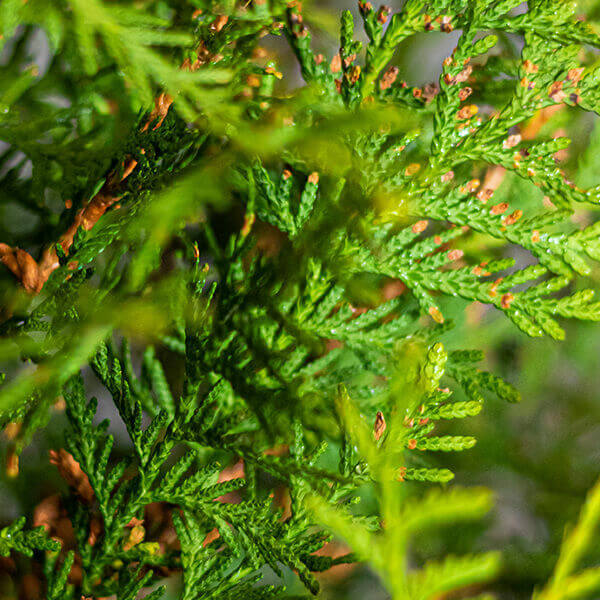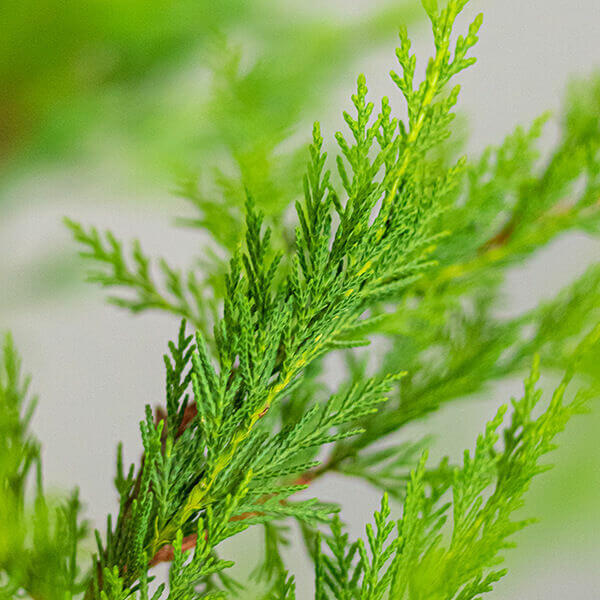Best Hedging Plants For Industrial Sites
Improve your garden's appeal with lush hedge varieties such as Yew (Taxus), Thuja, Laurel, Photinia, and Bamboo, commemorated for their structural integrity and ecological advantages.
Yew and Thuja provide evergreen protection and winter season durability, while Laurel uses rapid development and broad, aromatic leaves.
Photinia adds seasonal appeal with its lively red foliage, and Bamboo provides a low-maintenance, serene ambiance.
These hedges enhance air quality, reduce noise, and develop tranquil, private spaces.
Appropriate planting, spacing, and upkeep ensure vigorous development and ecological harmony.
Check out how these lavish varieties can elevate your garden's charm and wellness.
Secret Takeaways
Change Your Garden With Lush Hedge Varieties
- Select Yew for its dense, evergreen development and unequaled longevity.
- Choose Laurel for its fast development and broad leaves, making sure fast personal privacy.
- Choose Photinia for its vibrant seasonal foliage, which turns a striking dark red.
- Use Bamboo for a low-maintenance, winter-hardy hedge with aesthetic appeal.
- Area plants 2-3 per meter and prune frequently for optimum development and health.
Popular Hedge Plants
When changing a garden with lavish hedge varieties, it's vital to think about popular hedge plants such as Yew, Thuja, Laurel, and Photinia due to their distinct attributes and benefits.
Yew (Taxus) is highly esteemed for its longevity and dense, green growth, making it a prime choice for withstanding landscapes.
Thuja is noted for its evergreen foliage and robust winter resilience.
Photinia adds seasonal vibrancy with red leaves that darken in time, producing dynamic visual appeal.
Laurel offers rapid growth and aromatic, broad leaves, perfect for fast personal privacy.
Furthermore, Bamboo is an outstanding option for atmosphere, providing a low-maintenance, winter-hardy choice that boosts the garden's visual with its sophisticated, swaying walking sticks.
These selections cater to a range of horticultural requirements and choices.
Advantages of Garden Hedges
Garden hedges offer a multitude of advantages, making them an important addition to any landscape. These natural barriers are economical to implement and supply substantial wind security, enhancing air blood circulation and adding to sound reduction. The dense foliage of hedges like Thuja and Beech makes sure privacy by blocking exposure, creating a tranquil and remote environment.
Hedges likewise play a vital function in microclimate regulation, providing a steady environment that fosters plant development and reduces temperature level changes. Their intricate leaf structures filter toxins, improving air quality and adding to a healthier garden environment.
Moreover, hedges master noise decrease, absorbing and deflecting acoustic waves to lower ambient noise levels. This dual performance of offering both acoustic and visual personal privacy improves the total tranquility and aesthetic appeal of any garden.
Planting and Upkeep Tips
For a successful hedge, careful preparation of the planting area is essential. Make sure the soil has proper pH and drainage to support strong root development.
Space the plants properly for the picked types. Water the hedge frequently during its preliminary development phase, changing as needed with seasonal modifications.
Implement a organized bug control and disease avoidance method, using organic or chemical treatments when essential. Regularly inspect for aphids, mites, and fungal infections.
Apply mulch to keep wetness and reduce weeds. Seasonal pruning promotes thick development and air blood circulation, essential for plant health.
Following these guidelines will help you cultivate a dynamic, properly maintained hedge that boosts the appeal of your garden.
Spacing and Cutting Standards
Spacing and Trimming Guidelines
Proper spacing and cutting are vital for cultivating healthy, aesthetically appealing hedges. Appropriate spacing ensures each plant gets sufficient nutrients, light, and air flow.
Follow these guidelines for ideal hedge upkeep:
- Spacing: Position hedge plants 2-3 plants per meter to encourage robust growth.
- Pruning Methods: Routine pruning is necessary for preserving desired hedge height and shape. Trim new growth in summer and cut back older wood during winter season.
- Seasonal Care: Change cutting approaches and schedules according to seasonal requirements to make sure plant health.
- Hedge Height: Routinely screen and trim to maintain the wanted hedge height and attain consistent looks.
Abiding by these steps will guarantee your hedge grows, boosting both the appeal and functionality of your garden.
Choosing the Right Hedge
Picking the Right Hedge
Choosing the appropriate hedge includes examining elements such as mature height, foliage density, and ecological resilience. Effective hedge plant choice requires comprehending each species' development qualities and site-specific adaptability.
For instance, Yew (Taxus) provides exceptional durability and dense development, while Thuja is significant for its winter strength. Furthermore, thinking about maintenance requirements is crucial; fast-growing species like Laurel or Privet need regular cutting, whereas low-maintenance choices like Bamboo or Ivy may be more suitable for those looking for minimal maintenance.
Environmental elements such as soil type, light availability, and moisture conditions need to also assist the selection process. This mindful technique guarantees the picked hedges will thrive, offering both visual and functional benefits to the garden landscape.
Delivery and Planting Suggestions
To ensure your hedge plants prosper, they must be provided by specialized couriers and planted quickly upon arrival.
Follow these necessary actions for successful planting:
- Soil Preparation: Enhance the soil with natural matter to enhance drainage and nutrient content.
- Planting Depth: Produce a trench two times the width and equal to the depth of the root ball.
- Watering Techniques: Water completely after planting, keeping the soil regularly wet but not saturated.
- Mulching: Apply a layer of mulch to keep wetness and reduce weeds.
Consumer Assistance and Service
Given the important function of prompt help in horticultural pursuits, our customer support team is available six days a week through telephone, email, and social media to provide professional recommendations and swiftly deal with any concerns. Their commitment to quick reaction times guarantees client complete satisfaction by fixing queries associated with plant health, optimum planting approaches, and upkeep schedules.

Communication Approach
-------------------
Within 24 hours
This extensive support group, reinforced by an outstanding 9.3/ 10 consumer ranking, highlights our dedication to enhancing the gardening experience for every customer.
Regularly Asked Concerns
How Long Does It Take for Hedge Plants to Establish?
Hedge plants typically require one to three years to become fully developed, with the specific period differing by types and growing conditions.
Reliable care throughout this important duration is necessary for robust development. Constant watering, alert weed control, and proper fertilizer application are essential in promoting strong root advancement.
For example, fast-growing species like Laurel may develop quicker, while slower-growing ranges such as Yew might take longer. Persistent maintenance speeds up the facility procedure, resulting in healthy and thick hedges.
What Are the very best Hedge Plants for Personal Privacy?
The concern of the best hedge plants for privacy involves examining evergreen and deciduous choices.
Evergreen hedges like Thuja, Laurel, and Cypress offer year-round coverage, making sure constant privacy.
In contrast, deciduous hedges such as Beech use seasonal personal privacy, shedding leaves in colder months.
Secret upkeep suggestions for personal privacy hedges consist of regular cutting, fertilizing in spring, and appropriate spacing-- generally 2 to 3 plants per meter.
Additionally, constant watering and persistent weed removal are vital for promoting healthy, dense development.
Can Hedge Plants Draw In Wildlife to My Garden?
Yes, hedge plants can attract wildlife to your garden by supplying important advantages like shelter, food, and nesting sites, thereby boosting local biodiversity. Yew, holly, and laurel are outstanding for bring in birds, while ivy supports a variety of pests.
Nevertheless, it's important to keep in mind that there are some drawbacks, such as increased upkeep to manage pests and regular maintenance. Thoroughly selecting and keeping hedge varieties can assist balance these advantages and drawbacks, ultimately promoting a sustainable and dynamic environment in your garden.
Are There Any Flowering Hedge Plants Available?
Yes, there are flowering hedge plants readily available that can enhance the beauty of your garden.
For instance, Elaeagnus, likewise referred to as Olive Willow, produces fragrant white flowers in the fall, including a touch of beauty.
Photinia, another popular option, showcases vibrant red leaves that develop into an abundant green, developing a dynamic visual effect throughout the seasons.
To guarantee these plants prosper, it's necessary to practice proper pruning methods and seasonal upkeep, such as cutting brand-new development in the summer season and cutting back in the winter.
These measures will help preserve the health and aesthetic appeal of your flowering hedges.
How Do I Prevent Pests in My Hedge Plants?
To prevent insects in hedge plants, utilize natural insect control techniques and preserve correct hedge care. Present helpful pests like ladybugs, which victimize damaging bugs, to develop a well balanced environment.
Regularly check your hedges for indications of problem and without delay get rid of any afflicted parts to avoid the spread. Make sure the health of your hedges by using well balanced fertilizers and offering sufficient water.
Use mulching to retain soil moisture and correct spacing to lower plant tension and promote robust development. These practices collectively help in minimizing bug concerns and preserving a healthy hedge.
Conclusion
In essence, choosing the best hedge ranges such as Yew, Thuja, and Laurel can change any garden into a relaxing haven. These plants supply year-round plant, improve aesthetic appeal, and deal practical benefits like sound reduction and wind protection.
Correct planting methods, accurate spacing, constant watering, and seasonal trimming are vital for optimum growth.
Reputable delivery services and professional client assistance guarantee a seamless experience from purchase to planting, making it easier than ever to elevate your outside space.
Garden hedges use a wide variety of benefits, making them an important addition to any landscape. These natural barriers are affordable to carry Additional reading out and offer substantial wind security, enhancing air flow and contributing to noise reduction. The thick foliage of hedges like Thuja and Beech guarantees personal privacy by obstructing exposure, creating a peaceful and secluded environment.

Pruning Methods: Routine pruning is vital for maintaining wanted hedge height and shape. Cut new development in summertime and cut back older wood during winter season.